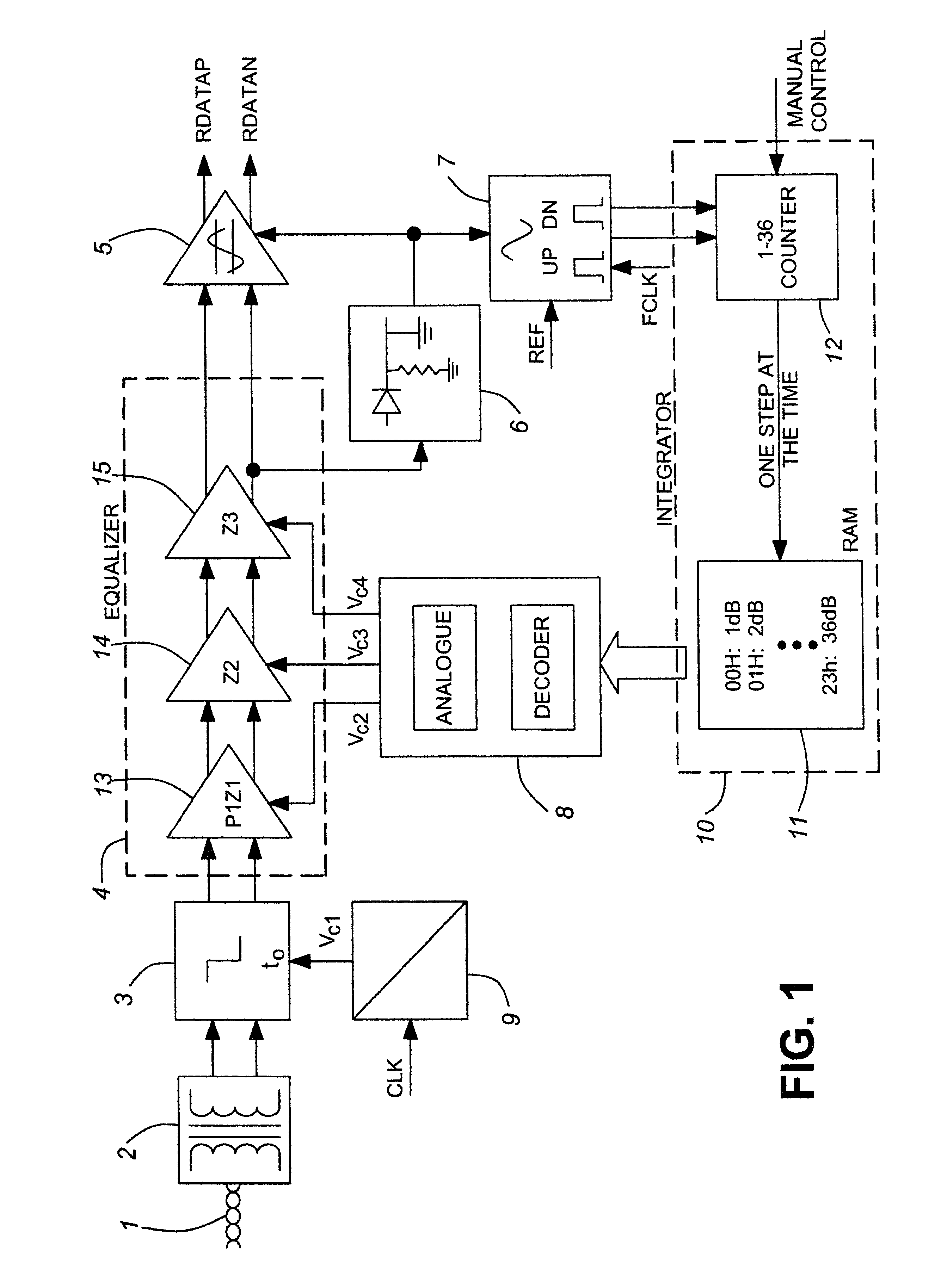Implementation method for adaptive equalizer in CMOS
a technology of equalizer and implementation method, which is applied in the direction of transmission, electrical apparatus, pulse shaping, etc., can solve the problems of high jitter in the output signal of the equalizer, feedback error signal, and attenuation of digital pulses transmitted through telephone lines
- Summary
- Abstract
- Description
- Claims
- Application Information
AI Technical Summary
Problems solved by technology
Method used
Image
Examples
Embodiment Construction
A transmission cable 1 is coupled via a transformer 2 and a band limiting filter 3 to the input of an equalizer 4. The output of the equalizer is coupled to the input of a digital pulse generator (e.g. a slicer) 5.
An output of the equalizer is coupled to the input of a peak detector 6, the output of which is coupled to the input of a feedback control circuit 7 and to a control input of the slicer 5. The output of the feedback control circuit 7 is coupled to the input of a counter 12, the output of which is coupled to address decode inputs of a memory 11, shown as a random access memory RAM.
The output of the memory 11 is coupled to the input of an equalizer control circuit 8 which is comprised of a decoder for the read output data from memory 11 and an analog control signal generation circuit which is controlled by the decoded output data from memory 11.
The analog output signals from equalizer control circuit 8 is applied to control inputs of equalizer 4 to control its transfer funct...
PUM
 Login to View More
Login to View More Abstract
Description
Claims
Application Information
 Login to View More
Login to View More - R&D
- Intellectual Property
- Life Sciences
- Materials
- Tech Scout
- Unparalleled Data Quality
- Higher Quality Content
- 60% Fewer Hallucinations
Browse by: Latest US Patents, China's latest patents, Technical Efficacy Thesaurus, Application Domain, Technology Topic, Popular Technical Reports.
© 2025 PatSnap. All rights reserved.Legal|Privacy policy|Modern Slavery Act Transparency Statement|Sitemap|About US| Contact US: help@patsnap.com


